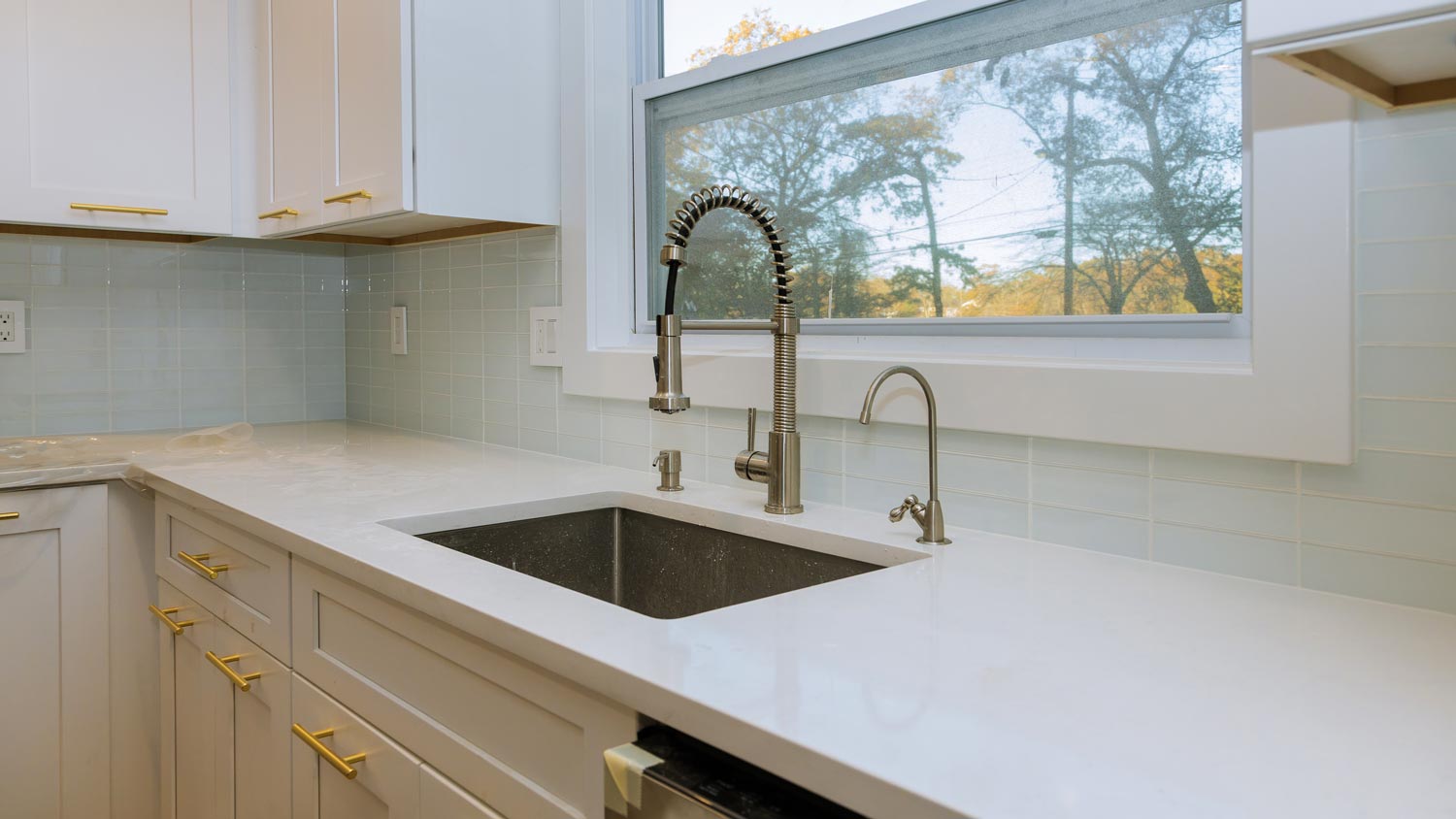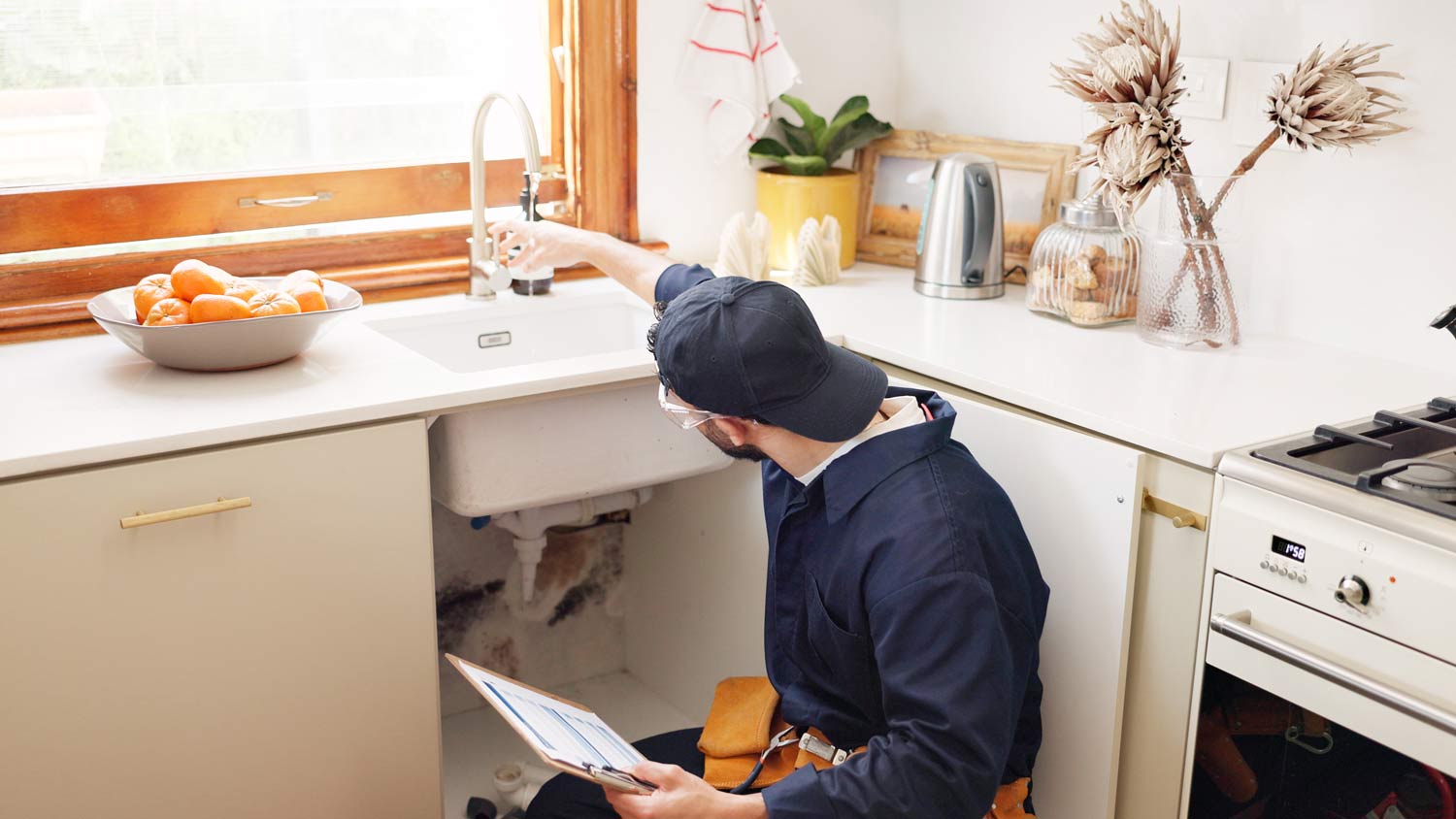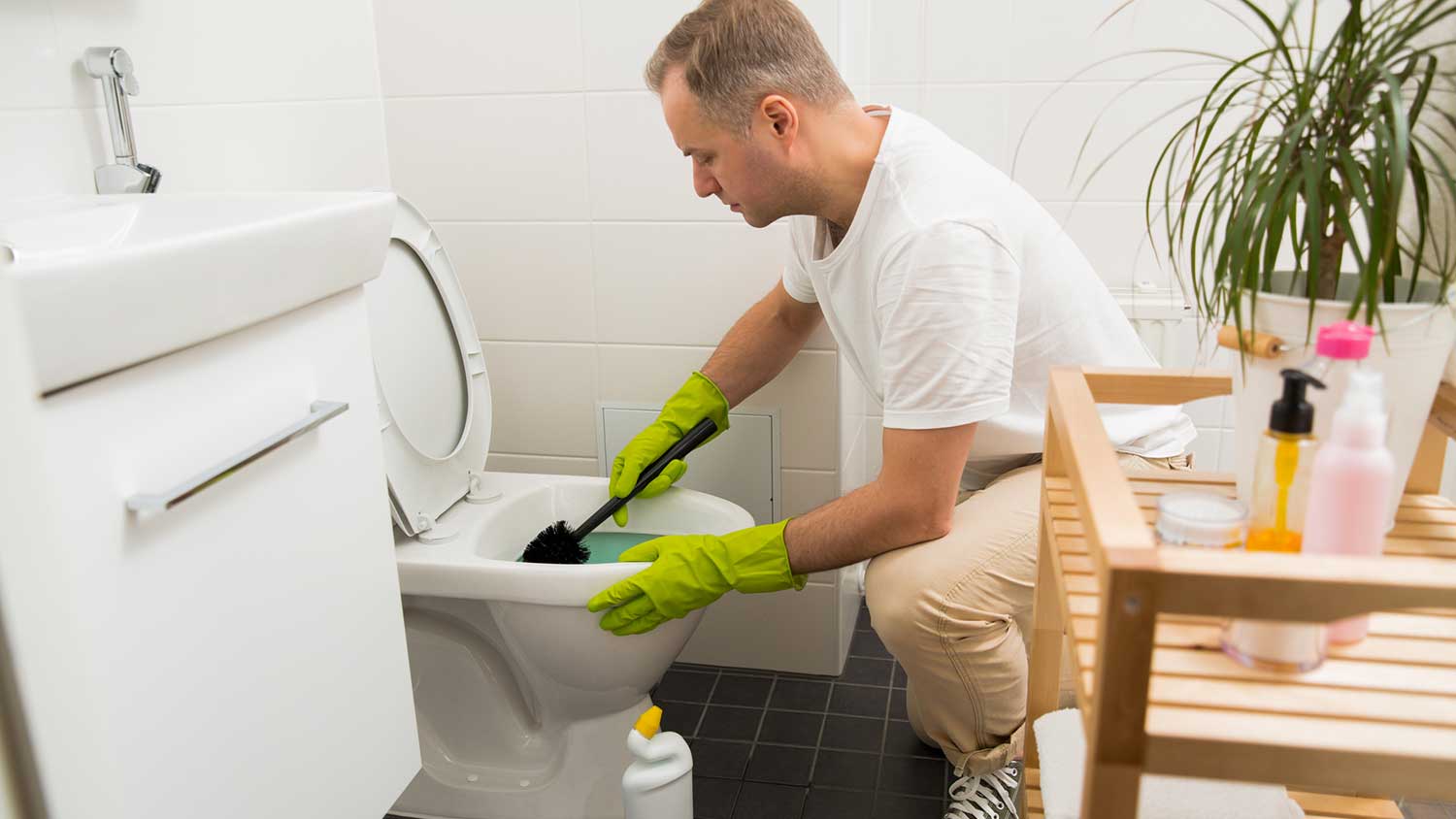Why Is Mold Growing In My Kitchen Cabinets? 5 Reasons Why
It’s time to shut the door on mold in your cabinets


High humidity, poor ventilation, and leaks are the biggest causes of moldy cabinets.
Mold remediation costs range from $1,200 to $3,800 on average.
Small mold problems caused by moisture can usually be DIYed.
For severe mold problems, faulty appliances, or leaks, contact a professional.
Reaching for a cup in your kitchen cabinets can have you recoiling if there’s mold hiding behind the doors. Kitchens are mold’s best friend when excessive moisture and poor ventilation combine, so invest in preventative measures to keep your cabinets mold-free. We’ve rounded up five common reasons mold is growing in your kitchen cabinets to help you remove mold for good.
1. Standing Water
The last thing you want in a kitchen is a standing ovation for water. Lingering water in your sink, drainage system, and dishwasher can all contribute to increased moisture in the air and the appearance of mold.
How to Fix It
Excess water is common in kitchens, but there are several steps you can take to lower that amount. First, don't leave standing water in your sink. Routinely inspect your dishwasher to ensure it's draining correctly, and check your garbage disposal for leaks. Hire an appliance repair person to fix any malfunctioning water-using appliances as soon as possible to keep moisture from lingering.
2. Poor Ventilation

Signs of a ventilation problem in your kitchen will make walls damp and windows foggy while promoting mold growth. If your kitchen lacks adequate ventilation, entering the area can feel like walking into a musty, thick cloud.
How to Fix It
Cracking a window open, investing in a kitchen exhaust fan, turning the air conditioner on after running the dishwasher or doing dishes, and turning up ceiling fans can all work together to help increase air circulation and improve the ventilation in your kitchen. You can also hire a professional duct installer in your area to get more airflow from vents throughout your home.
3. High Humidity
High humidity can happen in kitchens in moist climate zones. Even with the most meticulous ventilation and water-reducing measures, you could still find mold growing in your cabinets if the great outdoors is a mold-attracting wonderland.
How to Fix It
If you’ve already upped your ventilation, inspected your appliances, and removed any chances of standing water, the next best thing is to invest in a dehumidifier. This is an especially helpful investment if you live in a climate with high humidity levels. A whole-house dehumidifier costs between $1,300 and $2,800 on average and can save you on mold remediation costs, which can go all the way up to $7,000 in worst-case scenarios.
4. Leaky Plumbing

A leaky sink, dishwasher, garbage disposal, or pipes is another reason why mold could be growing in your cabinets.
How to Fix It
Investigate your water-using appliances and plumbing in the kitchen and any upper-level regions of your home if they’re located directly above the kitchen. If you can’t find the cause of the leak, it’s best to hire a local plumber who can. They’ll be able to recommend the best appliance technicians for repair work on any appliances while they tackle the plumbing issues.
5. Leaky Roofing
Sometimes, the reason your kitchen cabinets are moldy has nothing to do with your actual kitchen but your roof. If you’ve noticed mold in a very specific area of your cabinet—like the top section—you could very well have a roof leak.
How to Fix It
Fixing a leaking roof is not a beginner DIY project. You’ll need to find the source of the leak, navigate your way around dangerous heights, and take the right measures to repair your roof. But when it comes to leaks, time is of the essence, as mold can quickly bloom and spread. Work with a trained roofing contractor near you to complete this repair.
When to Call a Pro
For common moisture problems like standing water, poor ventilation, and high outdoor humidity, you won't need to call a pro to take action to resolve a mold problem. You might just need to clean the mold and make adjustments to decrease the amount of humidity in your kitchen.
But if you have a bigger issue on hand, like a leak or appliance malfunction, then you should hire a plumber or mold testing and remediation company to identify the problem and prevent the mold from returning.
How to Prevent Mold From Growing in Your Kitchen Cabinets
Prevention is the best way to prevent mold from growing in your kitchen cabinets. There are several steps you can take to keep your cabinets mold-free, including these tips.
Inspect your plumbing: Conducting a plumbing inspection once yearly can help identify problems as soon as they occur.
Increase ventilation: Crank open windows after washing dishes or mopping the kitchen, turn on the ceiling fan, and use your kitchen exhaust fan to lower the humidity levels.
Drain your sink: After pre-rinsing or handwashing dishes, drain your sink to prevent warm, standing water from increasing humidity levels.
Inspect your dishwasher and garbage disposal: Inspecting your dishwasher and garbage disposal can help you catch standing water and drainage problems as soon as they occur.
Repair appliances: Don’t neglect dishwasher repairs. A dishwasher that doesn’t work properly can hold onto moisture.
Install a dehumidifier: For homes in high-humidity areas, consider installing a dehumidifier to decrease indoor humidity.
Frequently Asked Questions
To remove mold from kitchen cabinets, use a homemade solution or a store-bought solution. If you catch the mold early, you might be able to kill it by applying vinegar and letting it sit for 15 minutes before wiping the solution off using a sponge or rag. If at-home products don’t work, you can use sodium hypochlorite to remove mold.
Be sure to wear PPE during the cleaning process and dry the cabinets after you’ve finished cleaning them.
If there is only a small mold problem, then you might be able to remove it and save the kitchen cabinets by acting fast. However, if the mold is severe, has spread to other parts of your kitchen or home, or is impacting sensitive family members, then you should replace the cabinets. A kitchen cabinet installation costs between $2,000 and $11,100, or $6,400 on average.















